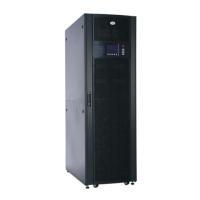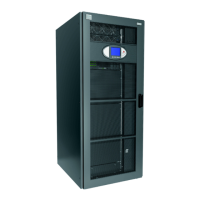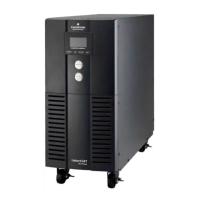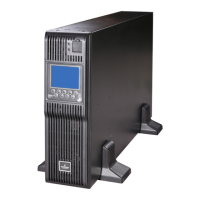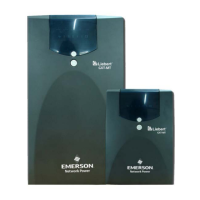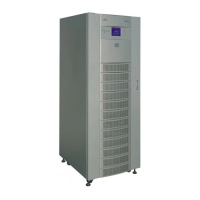Communication
Liebert
®
APS
™
40
Any Mode Shut Down
Pins 5 and 6: Input dry contact, normally open. After the external dry contact is closed (shorted), the
UPS output will be shut down during any mode of operation (mains, battery, bypass).
Battery Mode Shut Down
Pins 7 and 8: Input dry contact, normally open. After the external dry contact is closed (shorted), the
UPS output will be shut down only during battery mode operation.
3.3 REPO (Remote Emergency Power Off)
The Liebert APS is equipped with a REPO (Remote Emergency Power Off) connection. Only the SELV
(Safety Extra Low Voltage) circuit can be connected to the REPO terminal block. Figure 48 shows
the REPO connection pin layout. See Table 13 for the pin definition.
Figure 47 REPO connector pin layout
Figure 47 shows the schematic diagram of REPO switch connections.
Figure 48 REPO switch connections
NOTE
The default for the Any Mode and Battery Mode Shutdown features is disabled. Using this
function requires setting Remote comms shutdown to Enabled in the Settings through the
LCD. Additionally, the shutdown delay can be accessed in the LCD Settings to set the delay
time for the UPS shutdown after the dry contact is closed. Enabling the feature on the LCD
enables both shutdown methods.
Table 13 Pin definition of the REPO dry contact
Position
Name Description
9 REPO +12V REPO power, 12VDC 100mA
10 REPO Coil -NO REPO normally open nodes, shorting pins 9 and 10, REPO is triggered
11 REPO Coil -NC
REPO normally closed nodes (fail-safe), shorting pins 9, 10, 11, 12, and opening
pins 11 and 12, REPO is triggered
12 GND GND
During Shipping For Normally Open System For Normally Closed System
(fail-safe)
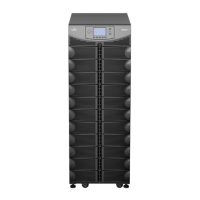
